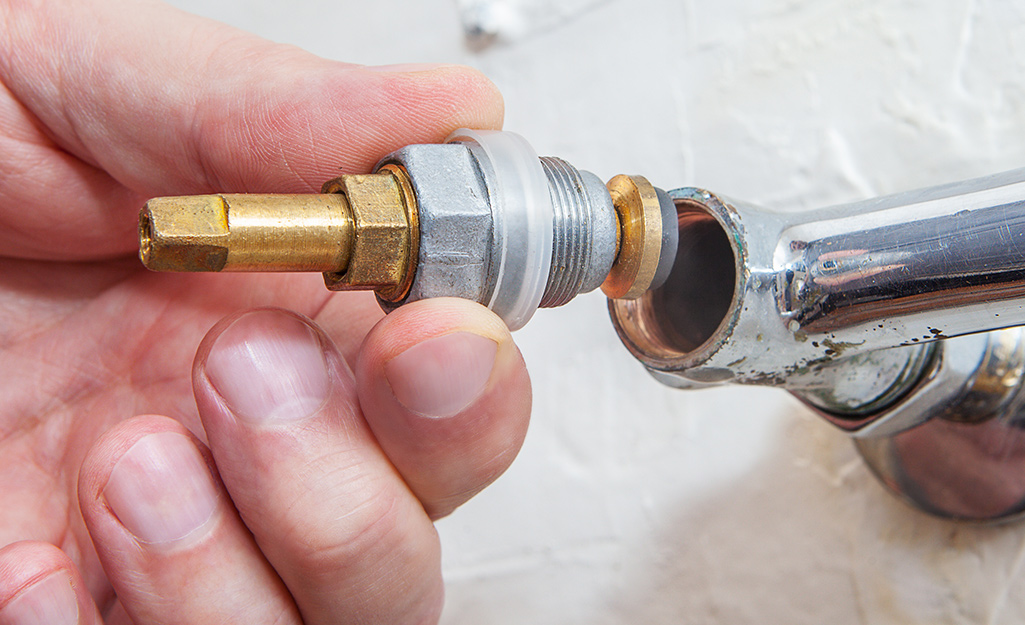Factors Why It's Critical to Mend a Broken Faucet
Factors Why It's Critical to Mend a Broken Faucet
Blog Article
Presented here underneath you can locate additional decent answers all about Why It's Important to Fix Leaky Faucets.

Trickling taps might look like a minor inconvenience, yet their influence surpasses just the annoyance of the noise. From wasting water to incurring unnecessary monetary prices and health risks, overlooking a trickling tap can result in different effects. In this article, we'll explore why it's critical to address this common home issue quickly and efficiently.
Waste of Water
Environmental Effect
Leaking faucets contribute substantially to water waste. According to the Epa (EPA), a solitary tap trickling at one drip per second can waste more than 3,000 gallons of water each year. This not only stress water resources but also influences communities and wildlife dependent on them.
Financial Prices
Raised Water Costs
Past the environmental impact, dripping taps can blow up water expenses significantly. The built up wastage over time equates into greater energy costs, which could have been stayed clear of with prompt repair work.
Potential Home Damage
In addition, extended dripping can cause damage to components and surface areas surrounding the tap. Water build-up can cause discoloration, rust, and even architectural problems if left neglected, leading to added repair service costs.
Wellness Worries
Mold and Mold Growth
The consistent presence of dampness from a trickling tap creates an excellent atmosphere for mold and mold growth. These fungis not only endanger indoor air top quality however additionally posture health threats, particularly for people with breathing problems or allergies.
Waterborne Illness
Stagnant water in leaking taps can become a breeding place for bacteria and various other virus, enhancing the danger of waterborne illness. Contaminants such as Legionella microorganisms thrive in stagnant water, possibly resulting in severe health problems when ingested or inhaled.
Do it yourself vs. Professional Repair work
Pros and Cons of DIY Fixing
While some may attempt to take care of a trickling faucet themselves, DIY repair services feature their own set of difficulties. Without correct expertise and tools, DIY attempts can intensify the problem or bring about insufficient repairs, extending the issue.
Advantages of Working With a Specialist Plumber
Hiring a professional plumber guarantees that the underlying root cause of the trickling faucet is dealt with successfully. Plumbers have the proficiency and devices to identify and repair faucet problems effectively, saving time and reducing the danger of additional damage.
Step-by-Step Overview to Fixing a Dripping Tap
Devices Called for
Prior to trying to take care of a leaking faucet, gather the required tools, including a flexible wrench, screwdrivers, substitute parts (such as washers or cartridges), and plumber's tape.
Common Faucet Issues and Their Solutions
Recognize the sort of tap and the certain problem triggering the drip. Common problems consist of damaged washers, rusty shutoff seats, or malfunctioning O-rings. Refer to producer instructions or on-line tutorials for detailed support on repair services.
Preventive Measures
Regular Upkeep Tips
To avoid leaking taps, execute regular maintenance such as cleaning aerators, evaluating for leakages, and replacing damaged components immediately. Additionally, consider mounting water-saving gadgets or updating to extra effective fixtures.
Value of Prompt Repairs
Addressing leaking taps as quickly as they're seen prevents more water waste and possible damages, ultimately conserving both water and money in the long run.
Effect On Residential Property Worth
Understanding of Well-Maintained Property
Keeping a residential property in good condition, including resolving maintenance concerns like leaking faucets, enhances its viewed worth and value amongst potential customers or tenants.
Impact on Resale Worth
Qualities with well-maintained plumbing components, consisting of faucets, command higher resale worths in the property market. Dealing with trickling faucets can contribute to a favorable impression during building evaluations and arrangements.
Environmental Obligation
Private Contribution to Preservation
Taking duty for repairing leaking faucets lines up with broader initiatives towards water conservation and environmental sustainability. Every individual's actions jointly make a substantial impact on maintaining precious resources.
Sustainable Living Practices
By focusing on punctual repairs and adopting water-saving routines, people add to lasting living practices that benefit both present and future generations.
Verdict
Attending to a trickling faucet goes beyond plain convenience; it's a vital step towards preserving water, reducing monetary expenses, and securing health and wellness and property. Whether through DIY repair services or specialist help, doing something about it to deal with trickling taps is a tiny yet impactful means to advertise responsible stewardship of resources and contribute to a healthier, much more lasting future.
How to Fix a Dripping or Leaky Faucet
A leaking faucet is one of the most common problems that homeowners encounter, but it being commonplace doesn’t make it any less annoying. The constant drip drip drip of a leaking bathtub faucet, showerhead, or sink tap can disturb your home’s serenity. Left neglected, a dripping faucet can also result in higher water bills and discoloration or mold growth in your sink or plumbing fixtures.
Fortunately, you don’t have to be a trained plumber to know how to stop a dripping faucet. With some basic tools, replacement parts, and a little patience, leaky faucet repair is a breeze. In this article, we’ll explain what causes dripping faucets and how you can fix them.
What Causes a Leaking Faucet?
Kitchen and bathroom faucets come in all manner of designs, but most involve some combination of valves, O-rings, seals, and washers. The O-ring is usually the weakest link, but any one of these pieces can wear down over time. Heat, moisture, temperature fluctuations, minerals, mold, and movement can contribute to warping and corrosion, breaking the watertight seal. This just comes with the territory of being a homeowner. Everything is always subject to wear and tear, and some component parts of your appliances and fixtures need to be replaced on occasion. At least replacement O-rings are cheap!
More rarely, dripping faucets can be a symptom of excessively high water pressure. Were this the case in your home, you would probably notice that the leak is not isolated to one faucet. Water pressure issues are harder to resolve on your own. We recommend contacting a professional plumber if you suspect your water pressure is too high.
How to Fix a Dripping Faucet
Pipe wrench or monkey wrench Allen wrench set Screwdrivers Old towel or rag Shut off the water.
Before you do anything, you need to turn off the water to keep from drenching your kitchen or bathroom. You should find a valve under the sink and against the wall. Once you’ve turned this valve, try turning the faucet on to confirm that the water source has been cut off.
If you can’t locate your local valve for the faucet you’re working on, you can always shut off the water to the house at the main valve. Of course, this will prohibit anyone from using the sinks, showers, or toilets while you’re working on the faucet that’s giving you trouble.
Plug or block the drain.
You’ll be disassembling the faucet and removing some small bits of hardware. Plug the drain with a stopper or rag to avoid the possibility of a small screw falling into your P-trap.
Take apart the faucet assembly.
There are several varieties of kitchen and bathroom faucets, each with its own manner of assembly. For detailed instructions on how to disassemble your faucet, you can refer to the fixture’s manual or contact the manufacturer. If you know whether you have a ball, disc, cartridge, or compression faucet, you can find detailed schematics online.
In general, you need to begin by removing the faucet handles. You might notice a small screw that you’ll need to remove with a screwdriver or Allen wrench. If you don’t see any visible securing hardware, it’s likely hidden under a decorative cap that can be unscrewed or popped off with flathead screwdriver.
Remove each piece methodically, consulting a schematic when necessary. Take notes or arrange the pieces in such a way to make it easier to correctly reassemble the faucet later.
Remove the cartridge.
Once you’ve removed the handles and securing hardware, you should be able to remove the valve cartridge or stem. Some cartridges will slide right out. Other faucet models will require you to loosen a nut with a pipe wrench before you can remove the valve stem.
Examine the exposed hardware.
With the cartridge or stem removed, inspect the component parts. Check the rubber O-rings for wear and tear. Also examine the seat washer for corrosion or other damage. These pieces are usually the responsible parties for a dripping faucet, but it’s worth inspecting the other component parts while you have the faucet disassembled.
Find replacement parts.
Once you’ve identified which faucet component has failed, find an identical replacement. Your local hardware store should have O-rings, seat washers, and other standard components in stock. If you have a luxury or uncommon faucet, you may have to contact the manufacturer for a replacement part.
It’s a good idea to take your old parts with you to the hardware store so you can compare them with the store’s inventory and be sure you’re purchasing the correct replacement.
Reassemble the faucet.
With your new parts in hand, reconstruct the faucet and handles. Don’t be tempted to overtighten screws or nuts. You might think this could create a better seal, but it can instead damage or bend a delicate part of the assembly and create a new problem for you.
Turn on the water and test the faucet.
The only thing left to do is test your work. Unplug the sink, turn the water back on, and try the faucet. Congratulate yourself on a job well done!
https://www.libertyhomeguard.com/how-to-fix-a-dripping-or-leaky-faucet/

I am very serious about How to Fix a Dripping or Leaky Faucet and I hope you enjoyed reading my blog post. Do you know another person who is occupied with the topic? Be sure share it. Many thanks for your time. Revisit us soon.
Report this page